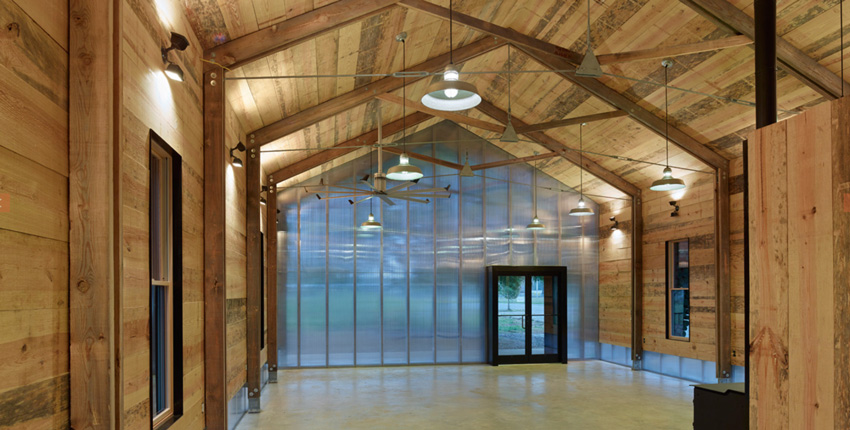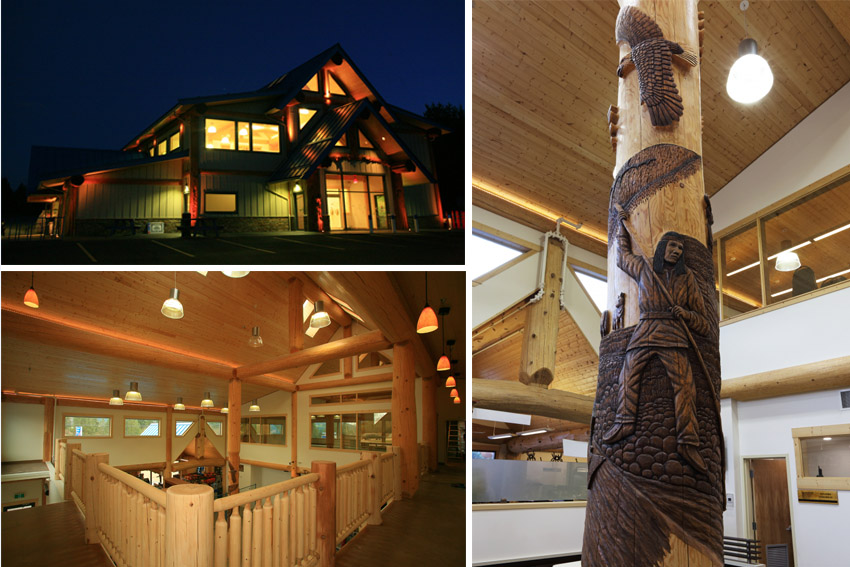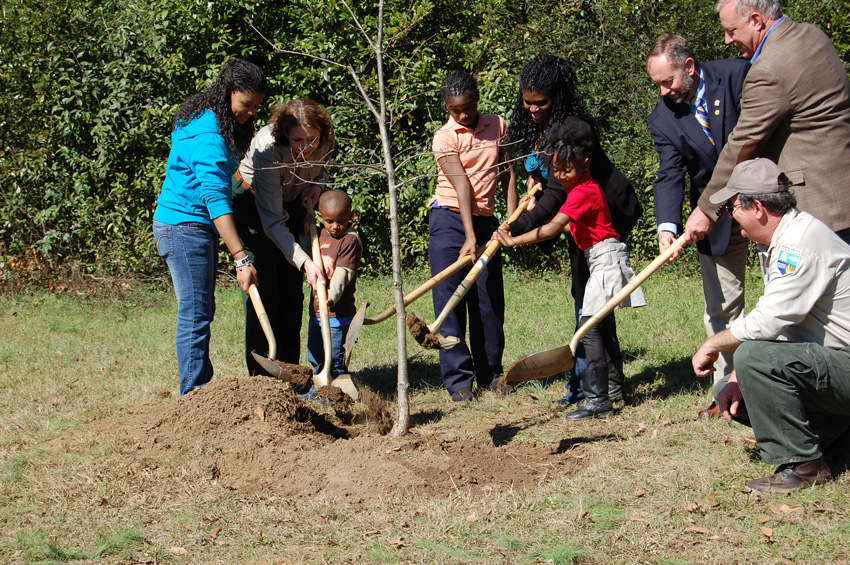Creating a New Path for Forest Products In Green Buildings
A new pathway to earning LEED points is encouraging more legal, responsibly sourced, and certified forest products to be part of the green building supply chain
![]() Continuing Education
Continuing Education
Use the following learning objectives to focus your study while reading this month’s Continuing Education article.
Learning Objectives - After reading this article, you will be able to:
- Apply the new Alternative Compliance Path to get LEED credits for using legal, responsible, and certified-sourced forest products in projects.
- Discuss SFI standards as mechanisms for sustainable forest management, verified supply chains, and responsible procurement of forest fiber.
- Explain the importance of verifying legal forest products to prevent widespread illegal logging and deforestation.
- Examine the connections between using forest products as a desirable, renewable resource, and protecting and expanding forests, through research, conservation, and strong community programs.
- Document SFI forest products for the LEED Alternative Compliance Path.
Architects and builders choose wood because it is a superior building material. Wood is a beautiful, renewable resource that is easy to work with. It also offers numerous environmental benefits. Using wood in green building projects supports many of the benefits offered by responsibly managed working forests, including clean air and water, biodiversity, habitat for wildlife, and employment for local communities. Now, a new LEED Alternative Compliance Path (ACP) for forest products will strengthen the positive impact of responsibly managed working forests in the construction sector. The U.S. Green Building Council (USGBC) Leadership in Energy and Environmental Design (LEED) program is one of the most powerful drivers of sustainable building in the United States.
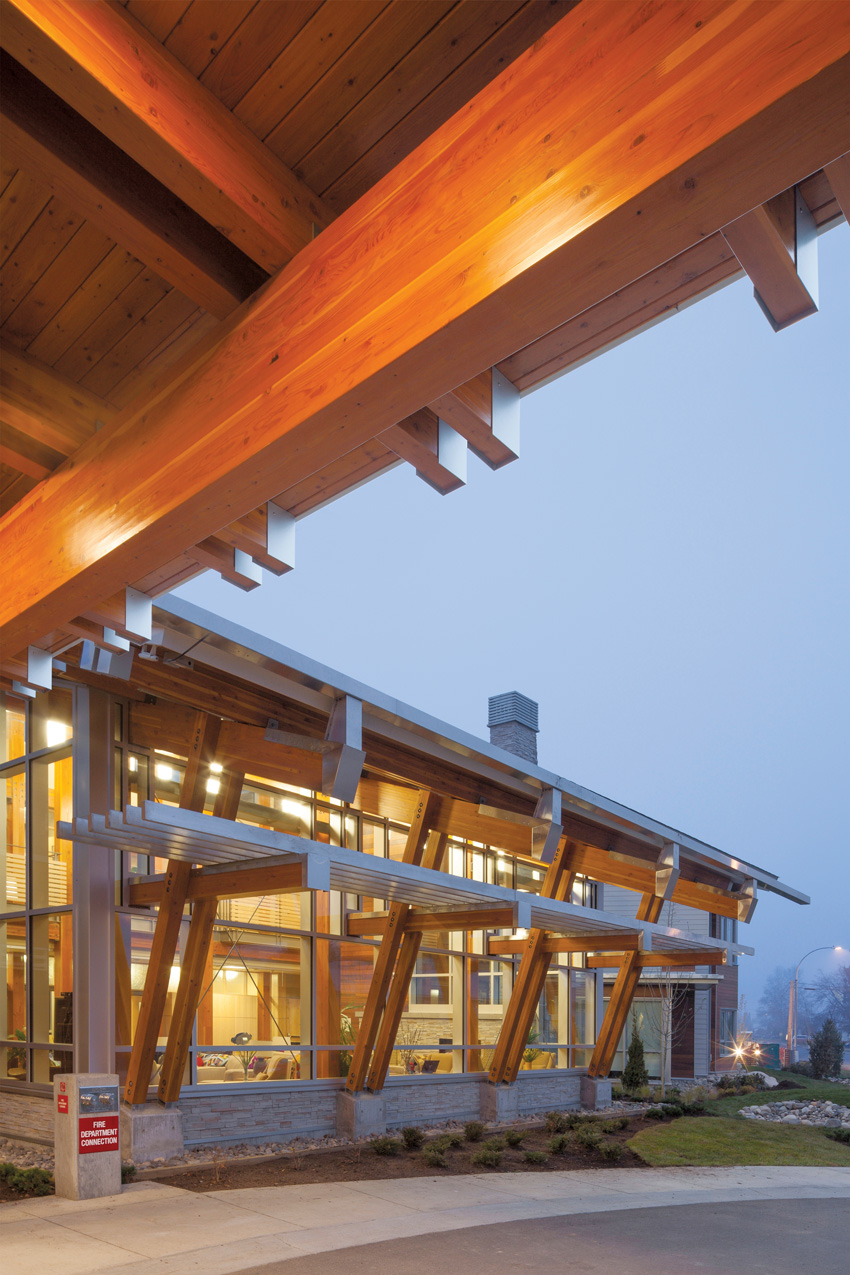
Photo courtesy of Wood Design & Building Awards
The Kordyban Lodge is the winner of the first SFI Wood Design Award as part of the 10th Annual Wood WORKS! BC Wood Design Awards. The lodge contains wood products from certified sources, the majority of which are certified to the SFI Standard, and provides a comfortable and peaceful home away from home for cancer patients and their caregivers. The stunning wood building spans 25,000 square feet and includes 36 beds, a meditation room, lounge, family room, massage therapy room, and more. Neale Staniszkis Doll Adams (NSDA) Architects.
In April 2016, the USGBC announced a LEED ACP that greatly expands the recognition of legal, responsible, and certified forest products to contribute to LEED credits. In the past, only forest products certified by the Forest Stewardship Council (FSC) were recognized in LEED. The new ACP pilot adds the Sustainable Forestry Initiative (SFI), the American Tree Farm System (ATFS), the Canadian Standards Association (CSA), and other forest management standards that are endorsed by the international Programme for the Endorsement of Forest Certification (PEFC). The new path applies to all LEED v4 rating systems, including Homes v4, and to all LEED 2009 rating systems.
This course explains in detail how architects can use the new ACP pilot credit to count forest products certified to the SFI Standards toward LEED points. Pilot credits allow LEED projects to achieve existing credits using approaches that are not part of the existing rating tool. An ACP pilot is used to test and refine new approaches to LEED credits. If adopted, it becomes part of the LEED rating system.
This course also outlines how the change will encourage environmentally responsible forest management and the use of forest products in innovative, sustainable buildings supported by LEED.
In addition, the course will explain the use of SFI’s three major standards: for managing forests, for responsibly procuring fiber, and for tracking forest fiber content throughout the building materials supply chain. Wood is one of the most commonly used building materials in the world so these standards and the new LEED path are important components in efforts being made around the world to use natural resources more wisely, protect the environment, and strengthen the communities that will take sustainable building into the future.
Why a New ACP?
Wood has been a popular building material since humans began building. Today, it remains one of the most widely used building materials—from ordinary lumber and light-frame residential construction to highly engineered, advanced products suitable for almost every building type. The range of projects using wood continues to widen, including high-rises and many other innovative structures, and interiors where wood is chosen as much for its beauty and appeal to the senses as for its high performance.
Lately, wood has also become a cornerstone of green building. On the scale of an individual building, the life-cycle cost and environmental impact of wood products are low compared to other common building materials.1 Wood is renewable and has a light carbon footprint in terms of manufacturing, transport and end-of-life recycling, re-use, or disposal.2
But the environmental value of wood goes far beyond the individual building. Forests improve the environment on a planetary scale. Trees renew the air supply by producing oxygen and improve air quality by absorbing ground-level ozone, carbon monoxide, and sulfur dioxide. In a year, a single tree can produce 260 pounds of oxygen and absorb 10 pounds of air pollutants, including ozone and particulates.3 At the same time, trees absorb and store carbon dioxide from the atmosphere as they grow, and incorporate absorbed carbon into the forest products that are produced from a tree. Through sequestration of carbon and offsetting fossil energy that would otherwise be required, just one tree can clean 330 pounds of carbon dioxide from the atmosphere every year.4 All of this helps lower the construction sector’s significant contribution to global climate change. Forests also improve water quality by acting as natural filtration and storage systems. The ability of forest vegetation and soils to absorb and filter water also increases groundwater, as clean water trickles down to feed aquifers, and reduces runoff during rainstorms.
Forests additionally provide habitat for both rare and common species, thus fulfilling an important role in stewardship of the environment. Forests create recreational opportunities, and provide aesthetic values that improve quality of life for millions of people.
In order for the source of wood products to remain renewable and for forests to provide their multiple benefits, forests must be healthy and thriving. Globally, that health is threatened by many factors, both naturally occurring and those resulting from human activities. Forest health and vitality can be threatened by climate change, invasive pests and pathogens, the severity of wildfires, illegal logging, and global deforestation.
One critical step to meet the challenge of deforestation is to ensure people understand the difference between irresponsible and responsible approaches to forestry. Real deforestation occurs when forests are converted to other land uses, and is distinct from harvesting under sustainable forest management regimes. Fortunately, in North America, strong laws and responsible forestry frameworks, like forest certification, help safeguard against deforestation. North America is universally regarded as a low-risk source of supply. But the global problem of illegal logging and deforestation is increasing, and with it the involvement of organized crime. A recent UN-Interpol report estimated that up to 30 percent of global logging is connected to organized crime. In some areas, such as parts of South America, Central Africa, and Southeast Asia, the percentage is much higher.5 Deforestation accounts for at least 10 percent of all carbon emissions caused by humans and results in devastation in the Amazon rainforests, the “lungs of the planet,” and in many other less high-profile areas.6
Trade in illegal forest products in the United States is prohibited by the Lacey Act and other laws (see www.forestlegality.org), and is closely monitored under credible forest certification programs that disallow the inclusion of illegally sourced materials. Architects, builders, and building operators have a responsibility to ensure they are using legal forest products.
Forest certification, in addition to offering a proof point to address these environmental problems, provides the added benefits of ensuring the promotion of the full range of values emanating from a responsibly managed forest, such as biodiversity, carbon storage, and water quality. LEED has taken an important step in strengthening the framework for decision making about wood products by widening the scope of accepted certification schemes through the ACP pilot.
The new LEED ACP offers greater access to responsibly sourced forest products and reinforces the value of certified forests, responsible sourcing, and chain-of-custody (CoC) for forest products.
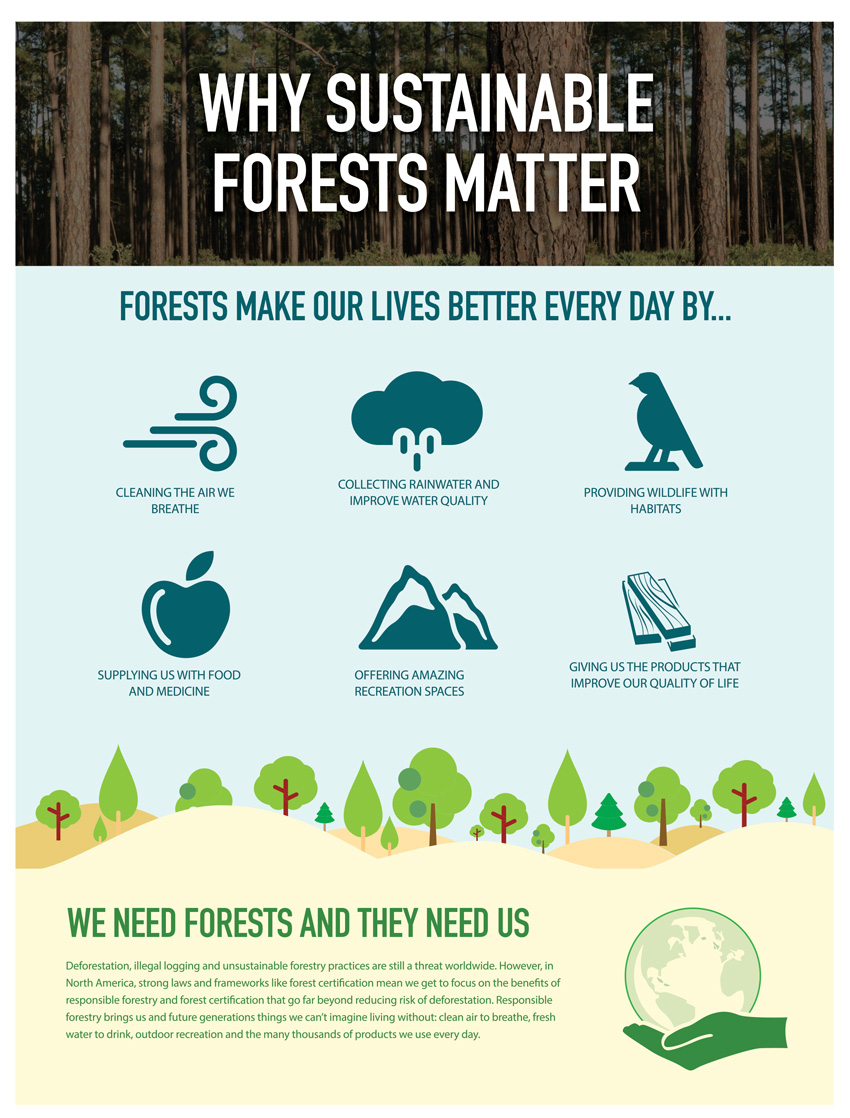
Image courtesy of SFI Inc.
What is the New ACP?
MRpc102 Legal Wood is a new ACP for forest products to achieve points in the Materials and Resources credit. The ACP applies to all LEED v4 and LEED 2009 systems where forest certification is referenced. This includes Building Design and Construction (BD+C), Interior Design and Construction (ID+C), Existing Building: Operations and Maintenance (O+M), and Homes (H) v4. All of the relevant credits are shown in Figure 1.
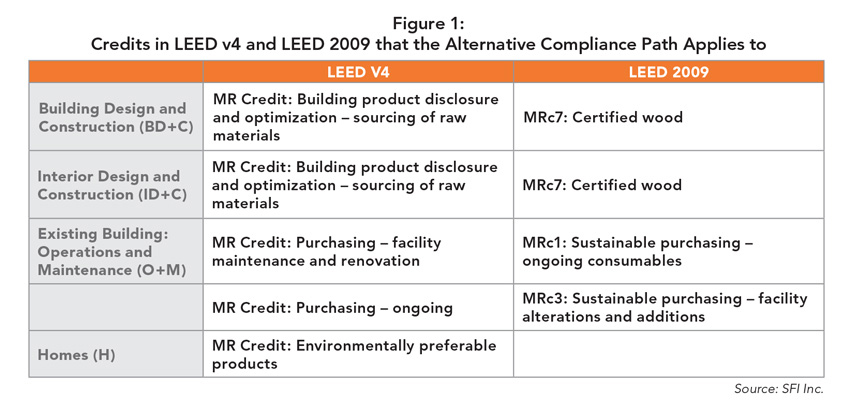
The ACP requires architects and builders to verify the legality of forest products used in LEED buildings and awards credit for the use of forest products certified to programs like SFI. In order to count toward a LEED point, the user must verify the following, as defined by ASTM D7612-10 (2015):
- 100 percent of the forest products are from legal (non-controversial) sources; and
- 70 percent of the products are from responsible sources.
- Once these two thresholds are met, the certified sources delivered through chain-of-custody certification can be used to obtain a point.
ASTM D7612-10 (2015): Standard Practice for Categorizing Wood and Wood-Based Products defines a framework for identifying and distinguishing among legal, non-controversial, responsible, and certified sources. The distinctions are important. Only 10 percent of the world’s forests are certified, which represents about 25 percent of the global roundwood production, but this does not mean that 90 percent of the remaining forests are illegal or even that they are irresponsibly managed.
However, identifying and supporting the increase of responsible and certified sources is the only way to verify that forest products are not only legal, but are from forests that are managed and overseen in a way that keeps them healthy and sustainable.
Later in this course, a step-by-step approach to qualifying for the new ACP pilot will be discussed in more detail. But the major direct route now opened for architects is through standards developed by certified third-party sources identified in ASTM D7612-10 (2015), as shown in Figure 2.
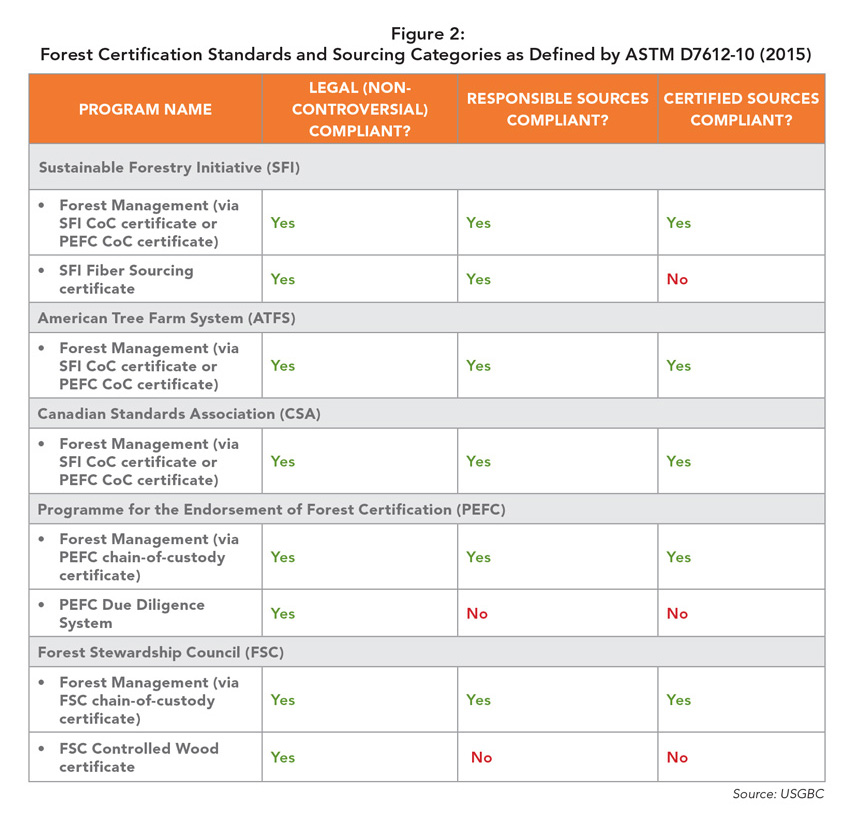
Among these recognized standards is the Sustainable Forestry Initiative Inc. (SFI) program. SFI Inc. is an independent, nonprofit organization that is solely responsible for maintaining, overseeing, and improving the internationally-recognized SFI program. SFI works at the intersection of sustainable forests, thriving communities, and responsible procurement. SFI is governed by a three-chamber board of directors representing environmental, social, and economic sectors equally. SFI Program Participants are responsible for more than one quarter of the global supply of certified forests. SFI maintains and publishes a list of all companies that have received SFI certifications, including which certification, where to look for the label (e.g., on tags, stamps, wraps, inserts, etc.), and what types of products are certified (e.g., lumber, plywood, oriented strand board [OSB], specialty engineered products, paper products, etc.).
Wood and paper products from these program participants meet one of three SFI standards, which in turn meet the requirements set out in the new LEED ACP pilot. All three of these standards require independent audits by competent and accredited certification bodies.
SFI 2015–2019 Forest Management Standard, for managing forestlands, promotes sustainable forestry practices, including measures to protect water quality, biodiversity, wildlife habitat, species at risk, and forests with exceptional conservation value.
SFI 2015-2019 Fiber Sourcing Standard, for responsibly procuring fiber, distinguishes SFI from all other forest certification programs because it sets mandatory practice requirements for the responsible procurement of all fiber sourced directly from the forest, whether the forest is certified or not. This standard is for manufacturers that do not own forestland but procure fiber directly from the forest. These fiber-sourcing requirements include measures to broaden the practice of biodiversity, use forestry best management practices to protect water quality, provide outreach to landowners, and utilize the services of forest management and harvesting professionals.
SFI 2015-2019 Chain of Custody Standard, for tracking forest fiber content, is an accounting system that tracks forest fiber content (certified forest content, certified sourcing, and recycled content) through production and manufacturing to the end product. Companies can use chain-of-custody certification to track and communicate forest fiber content using one of three optional approaches: physical separation, average percentage, and the volume credit method.
In relation to the new ACP, forest products certified to the SFI Fiber Sourcing Standard count as legal and responsible, while forest products delivered through the SFI Chain of Custody certificate count as legal, responsible, and certified sources.
How to Count Certified Products for a LEED Point
USGBC released LEED v4 in the summer of 2013, and it will eventually replace LEED 2009. However, builders, architects, and/or building operators can still submit projects under LEED 2009 if they register their projects by October 31, 2016. If the projects are registered on or before this date, the builders, architects, and/or building operators have until June 30, 2021 to complete their projects under LEED 2009. LEED v4 takes a more holistic approach than the LEED 2009 rating tool and focuses on all building materials to get a better understanding of the effect those materials have on the environment. Figures 3–5 highlight the various categories under the new ACP and what counts toward the credit. It’s important to note that LEED v4 and LEED 2009 use different accounting methods, which are discussed in detail below.
To help with determining if a product meets the new ACP, USGBC has published a credit calculator (www.usgbc.org/resources/legal-wood-pilot-acp-calculator) that shows what forest certification standards count toward the various categories as defined by ASTM D7612-10 (2015).
LEED v4 Using BD+C as an Example
In order to qualify for a point under the “sourcing of raw materials” credit in LEED v4 BD+C, a builder or architect must use at least 25 percent (based on cost) of permanently installed building materials that meet at least one of the responsible extraction criteria below.
- Extended producer responsibility (EPR): These are products purchased from a manufacturer that participates in an EPR program or is directly responsible for EPR. Extended producer responsibility uses financial incentives to encourage manufacturers to design environmentally friendly products by holding producers responsible for the costs of managing their products at end of life.
- Bio-based materials: Bio-based products must meet the Sustainable Agriculture Network’s Sustainable Agriculture Standard. Bio-based raw materials must also be tested using ASTM Test Method D6866 and be legally harvested.
- Reused materials and recycled content: “Reused” includes salvaged, refurbished, or reused products, and recycled content is calculated as the sum of post-consumer recycled content plus one-half the pre- consumer recycled content.
- Wood products: Wood products sourced from “certified” sources as defined by ASTM D7612-10 (2015) are deemed to satisfy the requirements of this credit.
For purposes of using SFI products, a builder or architect can use wood products certified to SFI under the “wood products” criterion to achieve a point under LEED v4. The builder or architect must first know that:
- 100 percent (with a de minimis amount) of all wood used on the project is from legal (non-controversial) sources; and
- 70 percent of all wood used on the project is from responsible sources.
- Once the above two criteria are satisfied, CoC certification can satisfy the final requirement that: at least 25 percent (based on cost) of all permanently installed building materials meet a responsible extraction criterion in LEED v4 rating tools.
To calculate an example, if the total value of all permanently installed building products (wood, concrete, and steel) is $10,000, the builder or architect must use at least $2,500 (25 percent of the total value) worth of materials that meet one of the four responsible extraction criteria. Figure 3 offers an example of how this credit might be calculated.
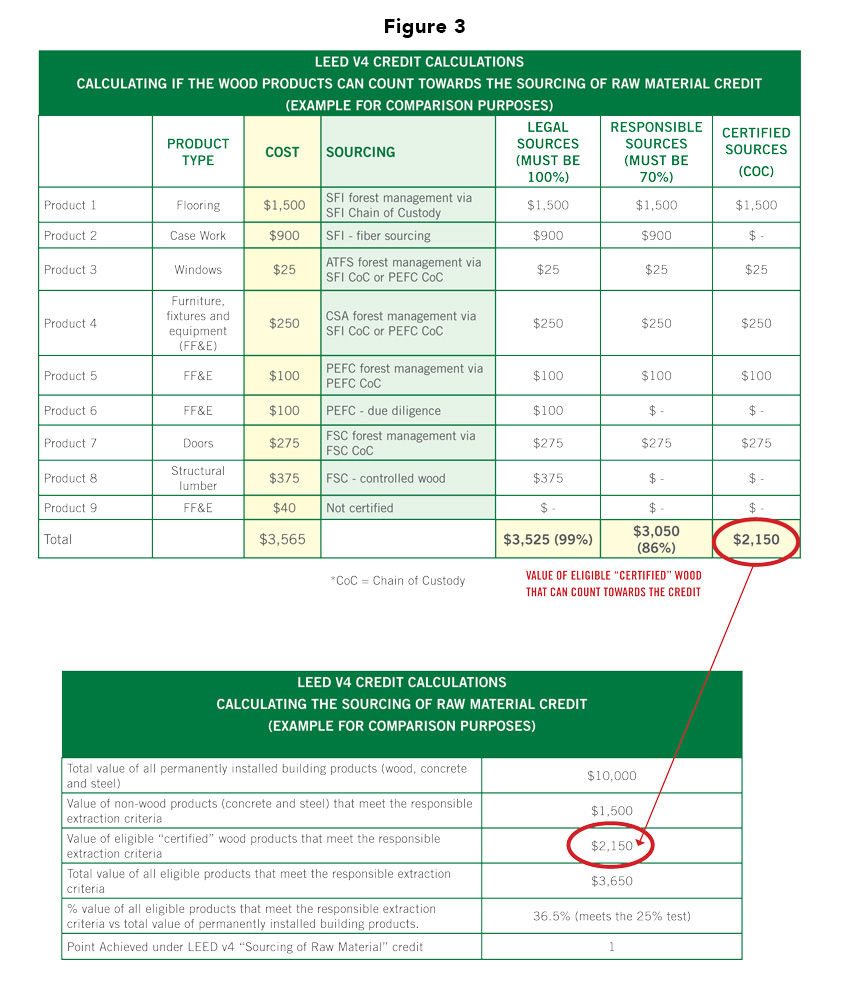
Source: SFI Inc.
LEED 2009 Using BD+C as an Example
LEED users must meet several criteria in order to qualify for a point under the new ACP in LEED 2009. They must first know that:
- 100 percent (with a de minimis amount) of all wood used on the project is from legal (non-controversial) sources; and
- 70 percent of all wood used on the project is from responsible sources.
- Once the above two criteria are satisfied, CoC certification can satisfy the final requirement that: at least 50 percent (based on cost) of wood-based materials are certified.
Figure 4 offers an example of how this credit might be calculated.
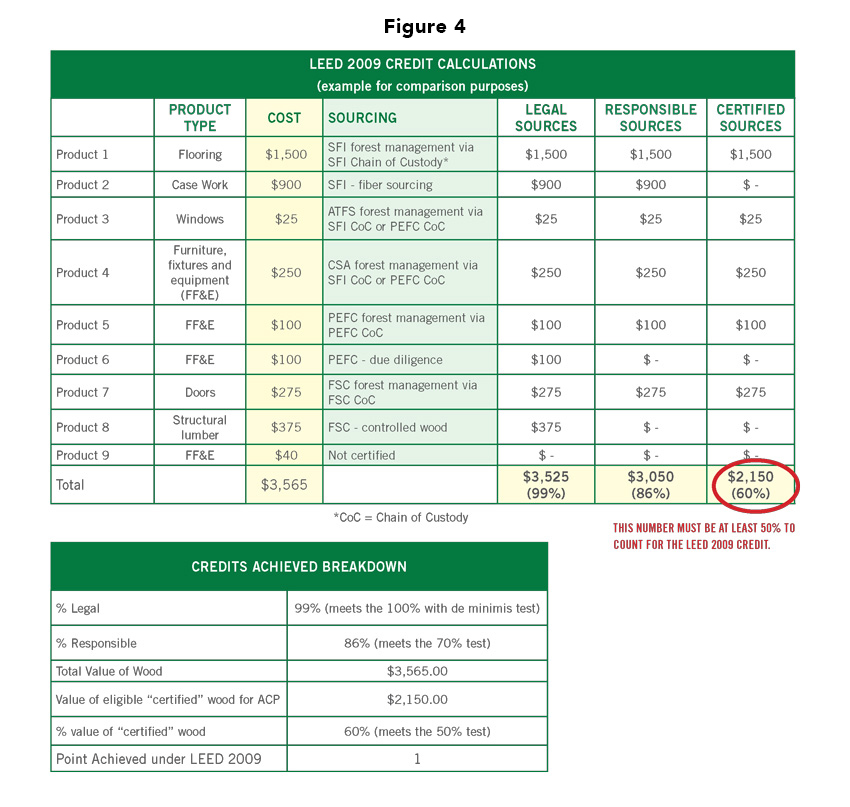
Source: SFI Inc.
LEED v4 Using O+M as an Example
The ACP also applies to LEED for Existing Buildings: Operations and Maintenance. This means that using paper, tissue,or furniture products certified to SFI Standards can help building operators achieve points in LEED v4 and LEED 2009. Below is an example of how to source SFI paper products to achieve a point in the ongoing purchasing of consumables credit.
In order to qualify for a credit under the “purchasing – ongoing” credit in LEED v4, a building must purchase at least 60 percent, by cost, of total ongoing consumables that meet at least one of the following criteria. Each purchase can receive credit for each criterion met.
- Post-consumer recycled content: The content of purchases must meet or exceed the levels listed in the U.S. Environmental Protection Agency Comprehensive Procurement Guidelines.
- Extended use: Batteries must be rechargeable. Toner cartridges for laser printers must be remanufactured.
- Sustainable agriculture: Food and beverages must be labeled USDA Organic, Food Alliance Certified, Rainforest Alliance Certified, Protected Harvest Certified, Fair Trade, or Marine Stewardship Council’s Blue Eco-Label, Canada Organic logo in accordance with Organic Products Regulations (SOR/2009-176) or labeled with the European Community Organic Production logo in accordance with Regulations (EC) No. 834/2007 and (EC) No. 889/2008.
- Local sourcing of food and beverages: The food or beverage must contain raw materials harvested and produced within 100 miles (160 kilometers) of the site.
- Bio-based materials: Bio-based products must meet the Sustainable Agriculture Network’s Sustainable Agriculture Standard. Bio-based raw materials must be tested using ASTM Test Method D6866 and be legally harvested, as defined by the exporting and receiving country. Exclude hide products, such as leather and other animal skin material.
- Paper and wood products: Paper and wood products must be sourced from “certified” sources as defined by ASTM D7612-10 (2015)
For purposes of SFI recognition, paper products certified to the SFI Standard under the “paper and wood products” criteria contribute to the 60 percent, by cost, of total ongoing consumables to earn a point under LEED v4. The owner or operator must first know that:
- 100 percent (with a de minimis amount) of all paper purchased for the building is from legal (non-controversial) sources; and
- 70 percent of all paper purchased for the building is from responsible sources.
- Once the above two criteria are met, the owner or operator must purchase paper from certified sources through a CoC. This can then count toward the final requirement that: at least 60 percent (based on cost) of all purchased total ongoing consumables meet at least one of the ongoing consumables criteria listed above.
To calculate an example, if the total spend for ongoing consumables is $10,000, the owner or operator must buy at least $6,000 (60 percent of the total value) worth of ongoing consumables that meet at least one of the six ongoing consumables criteria.
Figure 5 offers an example of how this credit might be calculated.
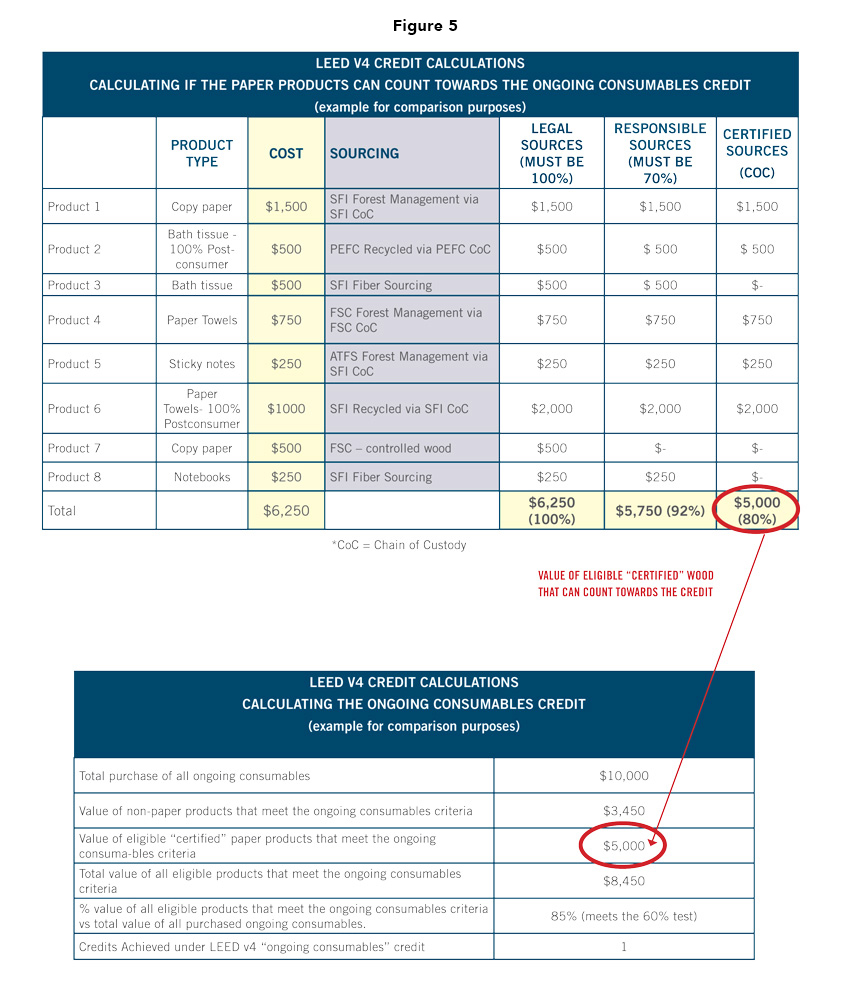
Source: SFI Inc.
How to Document SFI Wood and Paper for the LEED ACP
It is important for builders, architects, building owners, and/or building operators to easily locate and source products certified to the SFI standards. There are essentially three ways to document whether or not the wood or paper comes from SFI, CSA, and/or ATFS forest management. But it’s important to note that ATFS and CSA are forest management standards and do not have their own label or chain-of-custody program. The fiber from forests certified to ATFS and CSA is delivered to market through an SFI chain-of-custody and SFI label. In addition, fiber from any forest management standard endorsed by PEFC can be delivered to market through a PEFC chain-of-custody and PEFC label.
Three documentation methods
- An on-product label: The SFI program has on-product labels to help architects, builders, and operators identify exactly what they are buying. SFI has an SFI Certified Sourcing label and an SFI Chain-of-Custody label.
- If a LEED user sees the following SFI Certified Sourcing label, the product meets the “legal” and “responsible” categories.
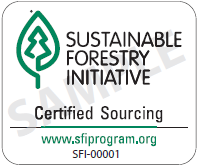
- If a LEED user sees the following SFI Chain of Custody label, the product meets the “legal,” “responsible,” and “certified” categories as described in Figure 2.
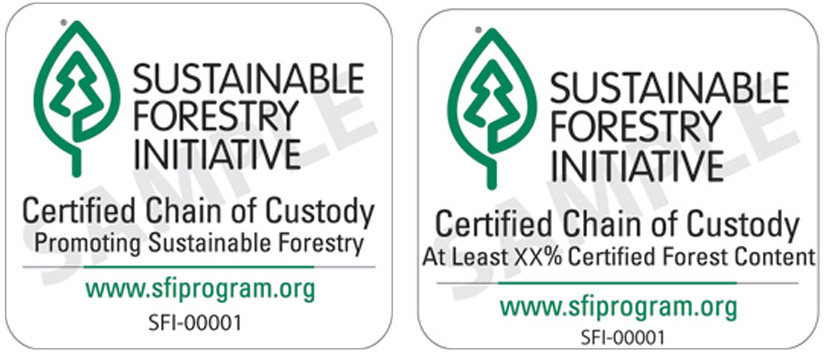
- If a LEED user sees the following SFI Certified Sourcing label, the product meets the “legal” and “responsible” categories.
- SFI Database: SFI also maintains a list of all certificate holders. The only way a company will show up in this database is if that company is certified. If the certificate is revoked or suspended, the company will not appear in the database.
- The SFI fiber sourcing database will verify if the company meets the “legal” and “responsible” categories as defined in the ACP. (Database: http://64.34.105.23/PublicSearch/SearchFiberSourcingCertificates.aspx)
- The SFI chain-of-custody database will verify if the company meets the “legal,” “responsible,” and “certified” categories as defined in the ACP. (Database: http://64.34.105.23/PublicSearch/SearchCertificate.aspx)
- Certificate from supplier: The final way an architect, builder, or operator can verify “legal,” “responsible,” or “certified” sources as defined by the ACP is through the sale of a product. Each company certified to SFI is issued a certificate by the certification body that conducted the audit.
- If the certificate states certified to the SFI 2015-2019 Fiber Sourcing Standard, then that product qualifies for the “legal” and “responsible” categories.
- If the certificate states certified to the SFI 2015-2019 Chain of Custody Standard, then the organization must communicate the fiber inputs in the product. Product sold with an SFI certified forest content claim qualifies for the “legal,” “responsible,” and “certified” categories.
Putting Forests First
As these important steps are taken to protect the forests that are a renewable source of a key sustainable building material, a multitude of other benefits will follow. The forests have significant economic value to the industries and communities that rely on them and the millions of people who work there.
But forests are meaningful to humans for many reasons beyond their monetary value. Most people have experienced this connection, but scientific research has also demonstrated that green places improve human health and well-being.7 About 95 percent of forests certified to SFI are available for recreation, hunting, fishing, birdwatching, camping, and just enjoying nature.
Forests also provide habitat for a diversity of species. So it is in everyone’s interest to build a strong foundation for healthy forests by promoting conservation and community, and teaching a new generation to be environmental guardians.
Healthy, thriving forests need management and oversight. This is essential to prevent illegal, destructive and the, unfortunately, widespread exploitation of unmanaged forests. Forest management is also key to mitigating the effects of increasing wildfires and disease due to climate change. The SFI Forest Management Standard requires sustainable harvest levels, reforestation, measures to protect water quality, biodiversity, wildlife habitat, species at risk, and Forests with Exceptional Conservation Value.
Unique to the SFI Program is the SFI Conservation and Community Partnerships Grants Program, which was founded in 2010. These grants help foster research and pilot efforts to better inform future decisions about forests and to help innovative community efforts grow. In total, the program has awarded 50 conservation grants and 35 community partnership grants totaling more than $3 million. When leveraged with project partner contributions, the total investment is $9.5 million. Past projects have included research to better understand the nutrition requirements of woodland caribou, supporting longleaf pine ecosystem restoration in the southern United States, and developing best practices for bird habitat management in forests of the northeastern United States and Rocky Mountain regions.
SFI is the only forest certification standard in North America that requires participants to support and engage in research activities to improve forest health, productivity, and sustainable management of forest resources. Since 1995, SFI program participants have invested more than $1.3 billion in forest research activities. Recent research grants focus on forest health and productivity (50 percent), water quality (6 percent), wildlife and fish (9 percent), landscape/ecosystem management and biodiversity (14 percent). The remaining 21 percent of research projects include topics like energy efficiency and life-cycle assessment studies.
The SFI program is a 20-year-old organization based on a guiding principle of continuous improvement. SFI works at the intersection of sustainable forests, thriving communities, and responsible procurement. Over the past 20 years, SFI has tightly aligned its own program goals with LEED’s seven impact goals that include reversing climate change, enhancing human health, protecting water resources and biodiversity, promoting sustainable material resources, building a greener economy, and enhancing social equity and community quality of life. The evidence of this is seen in SFI’s standards, programs, and initiatives.
End Notes
1O’Connor, Jennifer and Sathre, Roger. A Synthesis of Research on Wood Products & Greenhouse Gas Impacts, Second Edition. FPInnovations, 2010.
http://woodworks.org/wp-content/uploads/FPI-Greenhouse-Gas.pdf.
2Puettmann, Maureen E. et al. “Cradle-To-Gate Life-Cycle Inventory of U.S. Wood Products Production: Corrim Phase I And Phase II: Products.” Wood and Fiber Science, 2010. Updated January 2013.
http://www.corrim.org/pubs/reports/2013/phase1_updates/index.asp.
3McPherson, Gregory E. et all. “Northeast Community Tree Guide: Benefits, Costs, and Strategic Planting.” August 2007.
http://www.fs.fed.us/psw/publications/documents/psw_gtr202/psw_gtr202.pdf.
4McPherson, Gregory E. “Urban Forest Research.” March 2001.
http://www.fs.fed.us/psw/programs/uesd/uep/products/newsletters/UF1.pdf.
5Nellemann, C. Green Carbon, Black Trade: Illegal Logging, Tax Fraud and Laundering in the World’s Tropical Forests. UNEP and INTERPOL, 2012.
http://www.unep.org/pdf/RRAlogging_english_scr.pdf.
6Baccini, A. et al. “Estimated carbon dioxide emissions from tropical deforestation improved by carbon-density maps.” 29 Jan. 2012.
http://www.nature.com/nclimate/journal/v2/n3/full/nclimate1354.html.
7Harvey, Chelsea. “Why living around nature could make you live longer.” The Washington Post. 19 April 2016.
https://www.washingtonpost.com/news/energy-environment/wp/2016/04/19/why-living-around-nature-could-make-you-live-longer/.
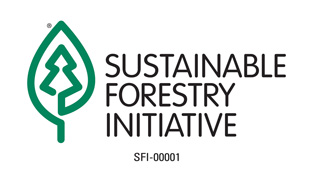
|
SFI® Inc. is an independent, nonprofit organization that is solely responsible for maintaining, overseeing and improving the internationally-recognized SFI program. SFI works at the intersection of sustainable forests, thriving communities and responsible procurement and works collaboratively with conservation groups, local communities, resource professionals, landowners and countless other organizations and individuals who share our passion for and commitment to responsible forest management. SFI Inc. is governed by a three-chamber board of directors representing environmental, social and economic sectors equally. Learn more at sfiprogram.org. |

